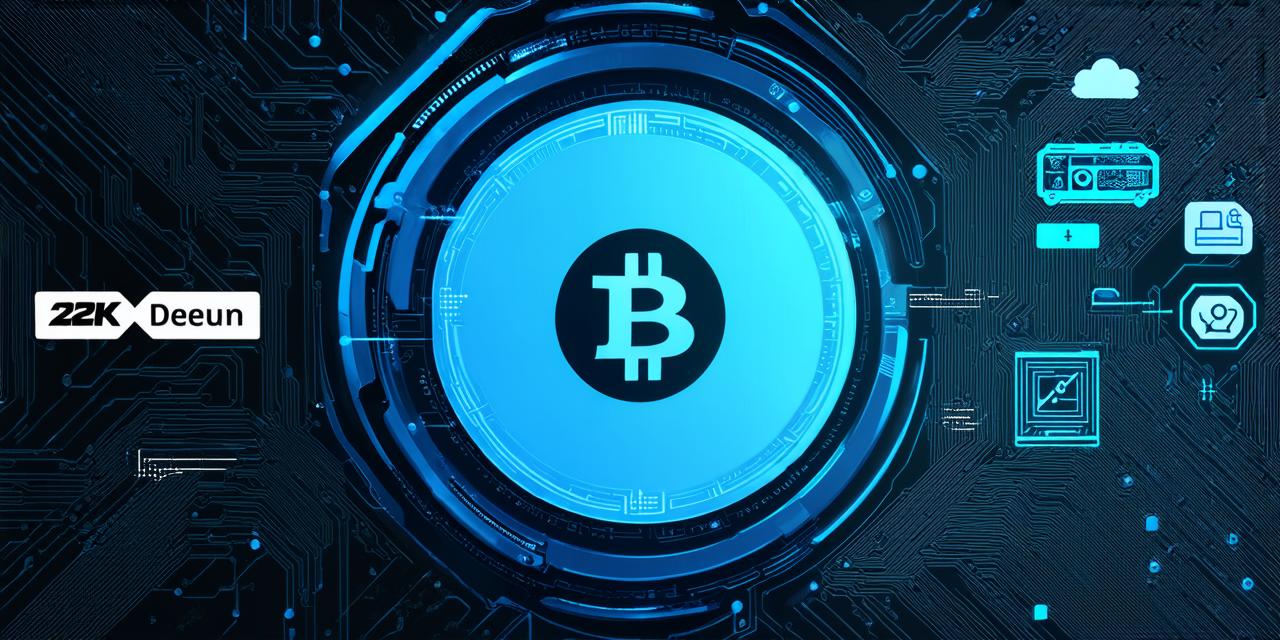Blockchain technology is a decentralized and distributed digital ledger that records transactions and data in a secure and transparent manner. It has the potential to revolutionize various industries, including finance, healthcare, supply chain management, and more. In this comprehensive guide for developers, we will explore what blockchain technology means, its history, how it works, and its benefits.
What is Blockchain Technology?
Blockchain technology is a decentralized digital ledger that records transactions and data in a secure and transparent manner. It allows multiple parties to share and access data without the need for intermediaries such as banks or government agencies. The data is stored in blocks, which are linked together in a chain, hence the name “blockchain.”
The key features of blockchain technology include:
- Decentralization: The data is not controlled by a single entity, but rather by a network of nodes that work together to validate and verify transactions.
- Immutability: Once data is recorded on the blockchain, it cannot be altered or deleted, ensuring the integrity of the data.
- Transparency: All participants in the network have access to the same data, making it transparent and auditable.
- Security: The use of cryptography and consensus algorithms ensures that the data on the blockchain is secure from unauthorized access or tampering.
History of Blockchain Technology
The concept of a decentralized digital ledger was first proposed in 2008 by an anonymous person or group using the pseudonym Satoshi Nakamoto. The idea was to create a system that could facilitate secure and transparent transactions without the need for intermediaries, leading to the creation of Bitcoin, the first cryptocurrency.
Since then, blockchain technology has evolved and has been applied in various industries, including finance, healthcare, supply chain management, and more. Today, it is estimated that there are over 10,000 different types of blockchain-based projects in development, with a total market value of over $2 trillion.
How does Blockchain Technology Work?
Blockchain technology works by using a consensus algorithm to validate and verify transactions. When a transaction is initiated, it is broadcast to the network, where it is validated by multiple nodes to ensure that it conforms to the rules of the blockchain. Once the transaction is validated, it is added to a block, which is then added to the chain.
Each block contains a timestamp, a cryptographic hash, and a reference to the previous block in the chain. The cryptographic hash ensures that each block is unique and cannot be altered without changing the hash. The reference to the previous block creates a chain of blocks, ensuring that the data on the blockchain is secure and immutable.
Benefits of Blockchain Technology
- Increased security: By using cryptography and consensus algorithms, blockchain technology ensures that the data on the network is secure from unauthorized access or tampering.
- Improved transparency: All participants in the network have access to the same data, making it transparent and auditable.
- Reduced costs: Blockchain technology eliminates the need for intermediaries such as banks or government agencies, reducing transaction costs and increasing efficiency.
- Increased efficiency: Blockchain technology allows for faster and more efficient transactions by eliminating the need for manual verification processes.
Real-Life Examples of Blockchain Technology
Blockchain technology has been applied in various industries, including finance, healthcare, supply chain management, and more. Here are some real-life examples:
- Bitcoin: The first cryptocurrency, which uses blockchain technology to facilitate secure and transparent transactions without the need for intermediaries such as banks.
- Ethereum: A decentralized platform that allows developers to build and deploy decentralized applications (dApps) using smart contracts.
- IBM Food Trust: A blockchain-based network that enables food manufacturers, retailers, and regulators to share data and improve traceability in the supply chain.
- MediLedger: A blockchain-based system that allows pharmaceutical companies to track the movement of drugs from manufacturer to patient, improving product safety and reducing counterfeiting.

FAQs
What is the difference between blockchain and Bitcoin?
Blockchain technology is a decentralized digital ledger that records transactions and data in a secure and transparent manner. Bitcoin is a cryptocurrency that uses blockchain technology to facilitate secure and transparent transactions without the need for intermediaries such as banks.
Consensus
How does consensus work on a blockchain?
Consensus algorithms are used to validate and verify transactions on a blockchain. When a transaction is initiated, it is broadcast to the network, where it is validated by multiple nodes to ensure that it conforms to the rules of the blockchain. Once the transaction is validated, it is added to a block, which is then added to the chain.
Security
Is blockchain technology secure?
Yes, blockchain technology is secure due to the use of cryptography and consensus algorithms. The data on the blockchain is encrypted and decentralized, making it difficult for hackers to access or tamper with the data.
